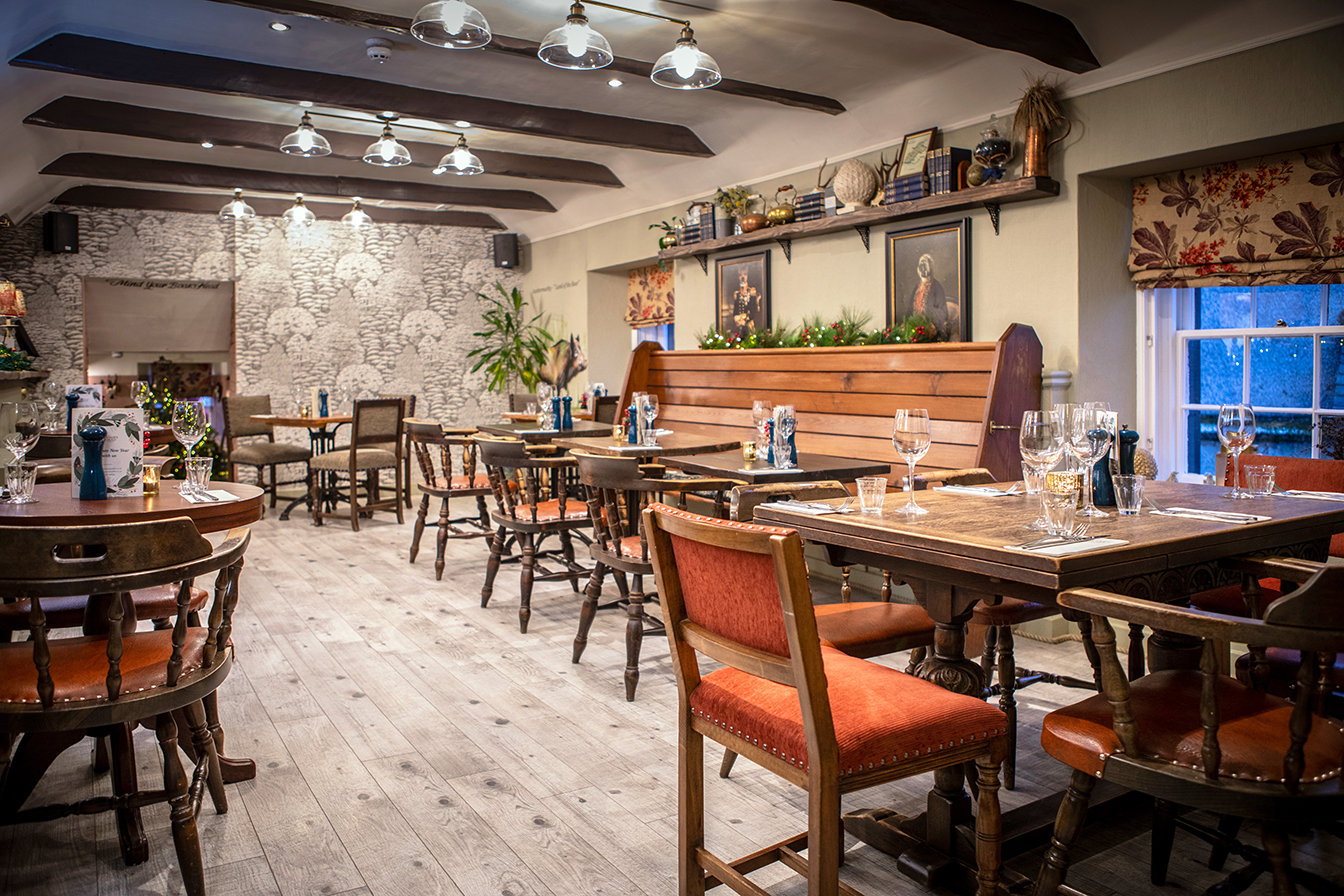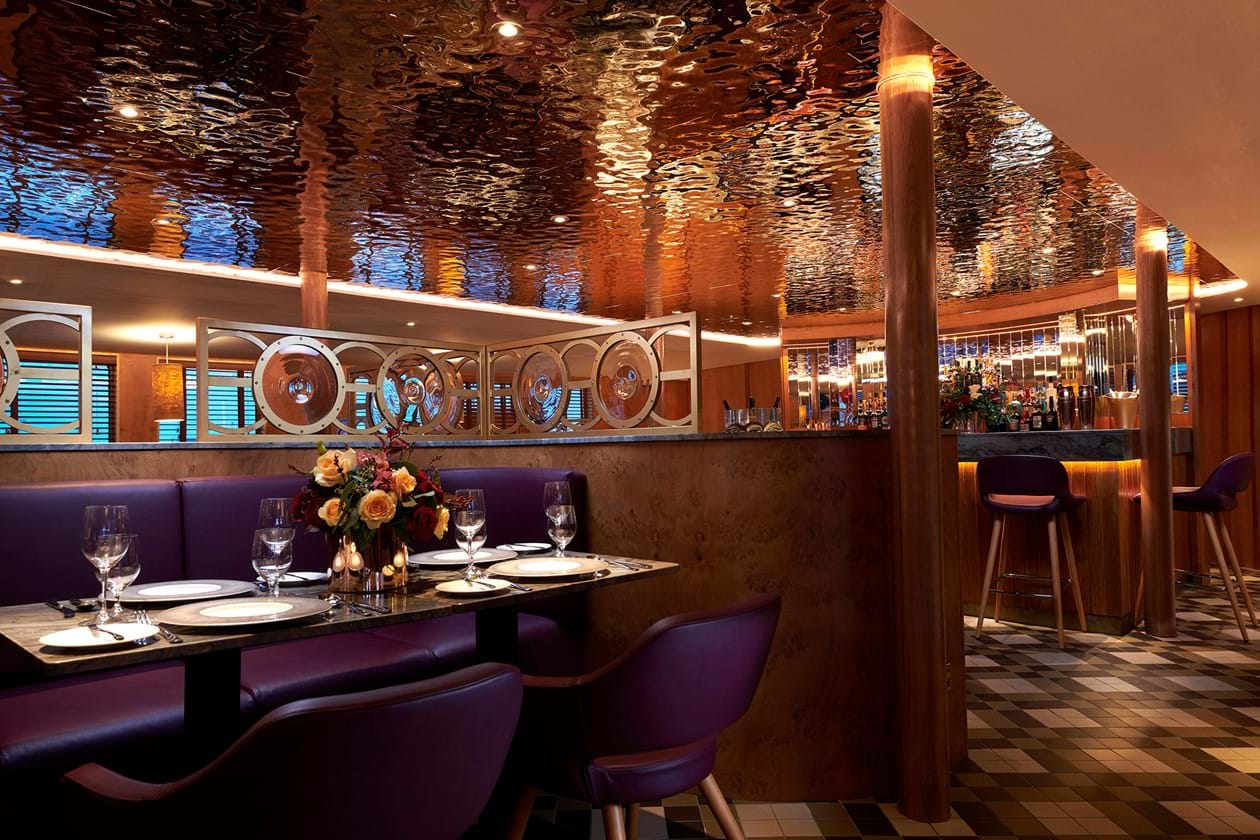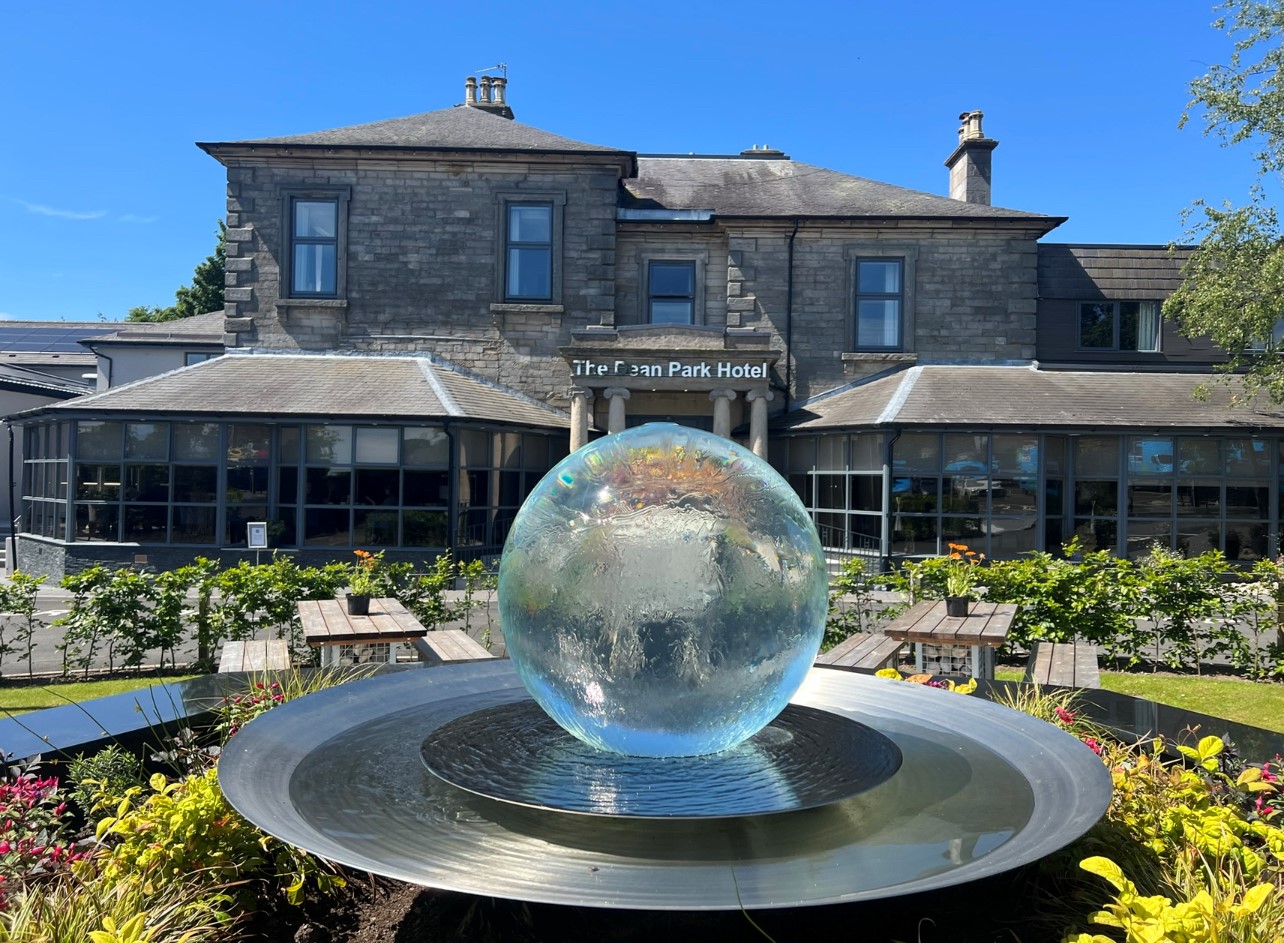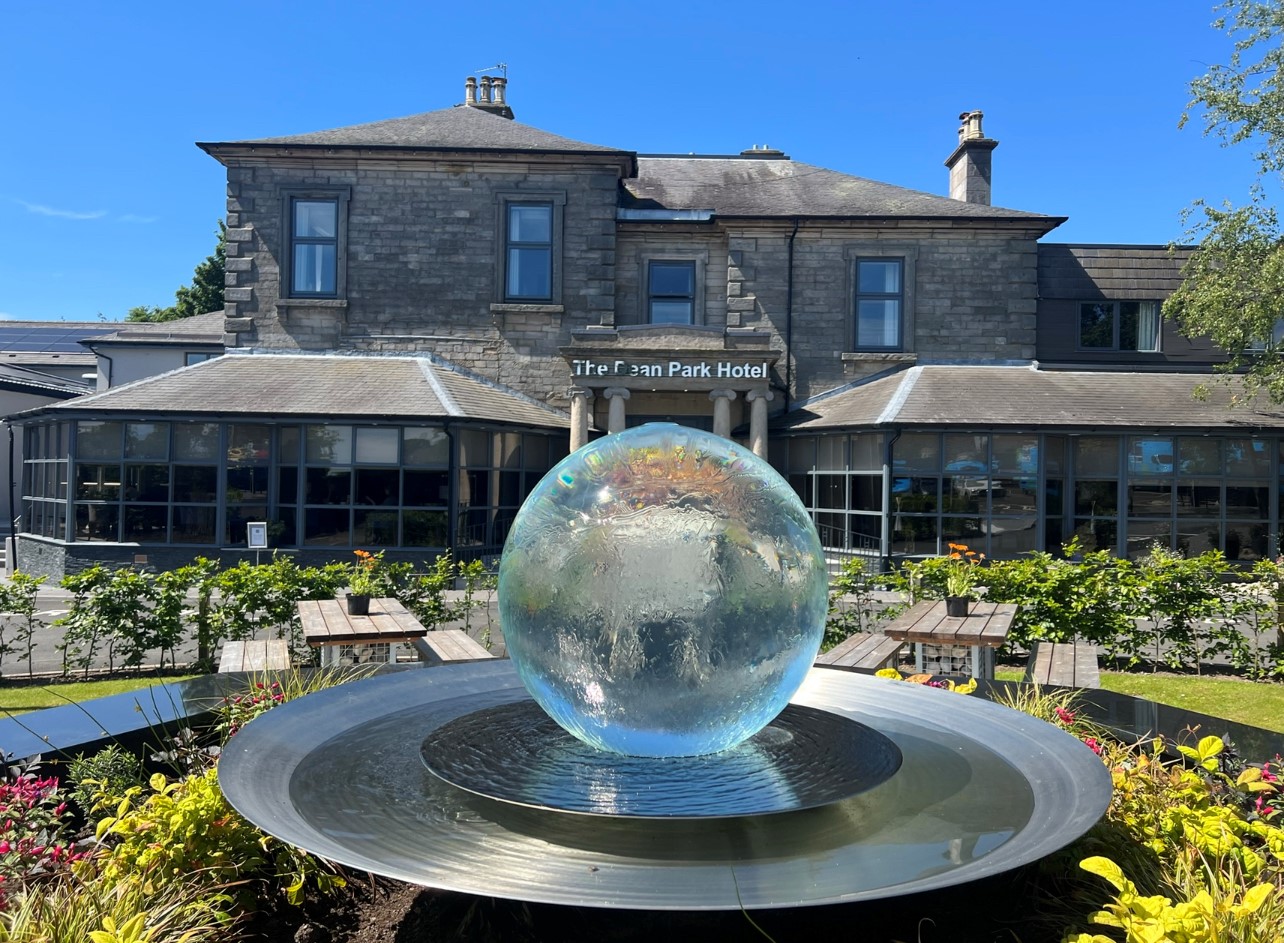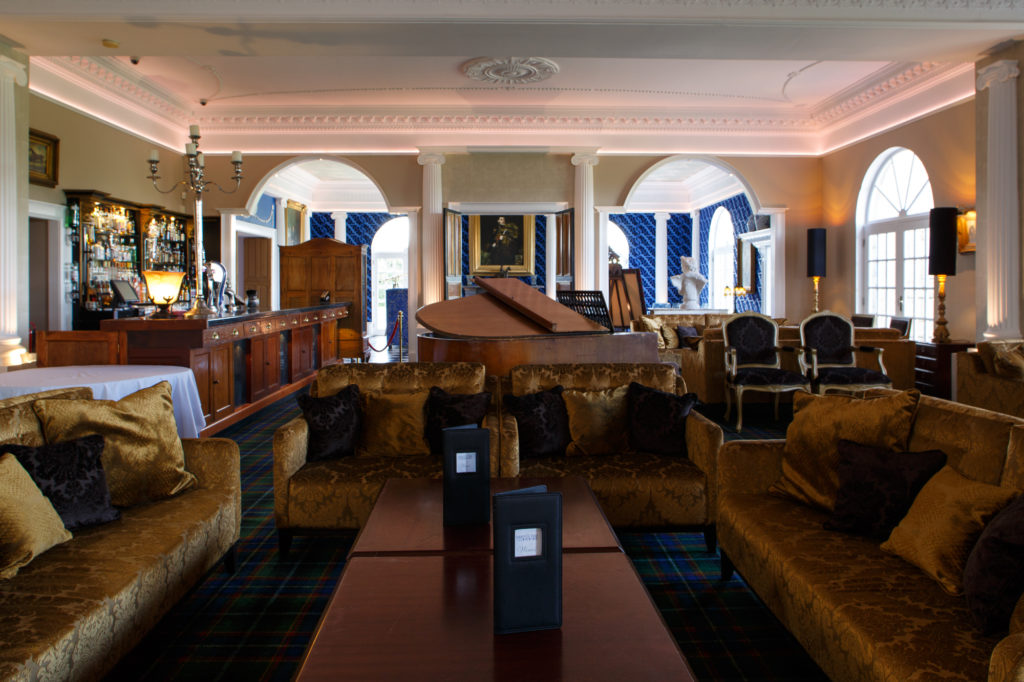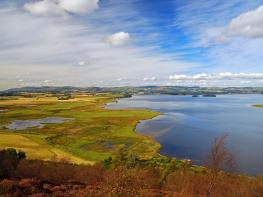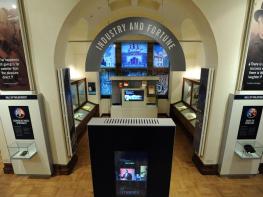The Dean Park Hotel is located in a peaceful residential area on the edge of Kirkcaldy just a…
Around Lochore Meadows Country Park

4 miles (6.4kms)
About the walk
'Oh, Fife’s got everything, just the place for tourists
See the bonny pit-bings staundin’ in a raw'
– John Watt and Davey Stewart, Shores of the Forth (1976)
The woods, wetlands and crags of Lochore look pleasantly wild. In fact, this is a triumph of land reclamation, created from the scarred territory of Fife’s once-huge coal mining industry.
Scotland’s Gulag
The pits here produced very high-quality coal, which was essential to Britain’s industrial success. Extracting it was hard, dirty work, and until the end of the 19th century it was carried on by serfs who were forced to work in the mines throughout their lives, as were their children after them. People found guilty of crimes that didn’t merit hanging might also be condemned to work in the mines for life. Serfdom ended in 1799, but women and children continued to labour underground until 1843, hauling baskets of coal that took two people to lift onto their backs. Fife’s hard-working mining communities became bastions of socialism and trade unionism, even electing Scotland’s first (and only) Communist MP in 1935. Willie Gallagher represented West Fife until 1950.
The death of King Coal
Most of Fife’s deep mines closed between the late 1960s and the late 1980s. The last Lochore mine closed in 1967, with the loss of many jobs in the local community. To compensate, a programme of reclamation began, aimed at recovering land scarred by massive ‘pit bings’ (slagheaps). A million trees were planted, a lake was created, and a huge effort was made to create a place for the enjoyment of local people and visitors. It is now the Lochore Meadows Country Park, and the loch is popular with water sports enthusiasts.
A haven for wildlife
Wildlife has gradually returned to this former post-industrial wasteland. You’ll see carpets of bluebells in spring, and clumps of sweet-smelling wild thyme all through summer. Herons stalk the shallows and wetlands around the lake, and tawny owls and woodcock nest in the woods. On a damp day in midsummer you may encounter hundreds of tiny frogs that have just ventured onto land from the pools where they hatched into tadpoles. Try not to squish them as you walk.
Walk directions
From the visitor centre car park, walk towards the loch and bear left in the direction of the green-painted Outdoor Education Centre (at weekends you can go canoeing, kayaking or sailing on the loch from here). Then follow the sign to join the footpath that runs round the loch. When you get to the footbridge on your right, you can detour for a short distance to your left to look at the neglected ruins of Lochore Castle. Otherwise, cross over and go through a patch of woodland. When you reach a wider track, with a modern housing development dead ahead, turn right and go through a kissing gate. You're now walking on a broad cinder track, and as you walk you'll pass gorse bushes and reed beds – and in summer you may spot dainty harebells. Also known as Scottish bluebells, they like to grow on poor soils. The path runs below the cliffs and crags of former quarries, which now have a wild and natural appearance.
Go through a gate, then on through a copse to walk near an island in the lake. The islands are named Moss, Tod and Whaup, taken from old local dialect words for wetlands, fox and curlew respectively. Pass through a series of gates, between fields of grazing cattle and on to a firm track that leads through the woods.
Soon come to a footbridge on your right, and cross over. (You can make a short detour by following the track ahead to visit the bird hide.) Follow the obvious track (there's a lovely smell of wild thyme in the summer) and the path then opens out on the left-hand side. Go through the metal kissing gate, then turn right to follow the tarmac lane. Pass a path off to the left which goes to Harran Hill Wood – noted for its beautiful carpet of bluebells in spring.
Unless you wish to explore the wood, remain on the tarmac lane. Just beyond a small car park and a barrier pole across the lane, fork right to reach the water's edge. (Alternatively you can keep to the tarmac lane which is the old Pit Road. If you do this, follow the lane to a car park, then turn right to walk back to the visitor centre.) Walk round the edge of the loch, following the obvious track by the water, to reach the visitor centre and the starting point.
Additional information
Firm grassy paths and tarmac tracks
Tranquil loch and mixed woodland
Good, but lead required in some sections
AA Leisure Map 27 Loch Lomond & Inverary
Lochore Meadows Country Park visitor centre
Lochore Meadows Country Park visitor centre
WALKING IN SAFETY
Read our tips to look after yourself and the environment when following this walk.
Find out more
Also in the area
About the area
Discover Argyll & Bute
This is a county that’s all about awe-inspiring landscapes and unique island cultures. Ex-Beatle Paul McCartney put the area on the map when he wrote Mull of Kintyre, recorded in 1977 with the local pipe band backing his group. Kintyre is a long, thin peninsula that points south from the mainland, sheltering the mouth of the Firth of Clyde from the open sea. It’s very nearly an island, with just a narrow isthmus connecting it with Knapdale, to the north.
Tucked away at the end of the Firth of Clyde, Bute has been the holiday playground for generations of Glaswegians and is home to some of the finest golden beaches anywhere on the west coast. It may not boast the wild mountain grandeur of some of Scotland’s other islands, but Bute is blessed with swathes of heathery moorland and a range of low, fertile hills, perfect for walking and studying the local wildlife. Such is the variety of landscapes that make up this county.
To experience the sights and sounds of the area, visit Dunoon in late August for the Cowal Highland Gathering, when more than 150 pipe bands from all over the world compete for prestigious trophies.
Nearby stays
Restaurants and Pubs
Nearby experiences
Recommended things to do
Why choose Rated Trips?
Your trusted guide to rated places across the UK
The best coverage
Discover more than 15,000 professionally rated places to stay, eat and visit from across the UK and Ireland.
Quality assured
Choose a place to stay safe in the knowledge that it has been expertly assessed by trained assessors.
Plan your next trip
Search by location or the type of place you're visiting to find your next ideal holiday experience.
Travel inspiration
Read our articles, city guides and recommended things to do for inspiration. We're here to help you explore the UK.



